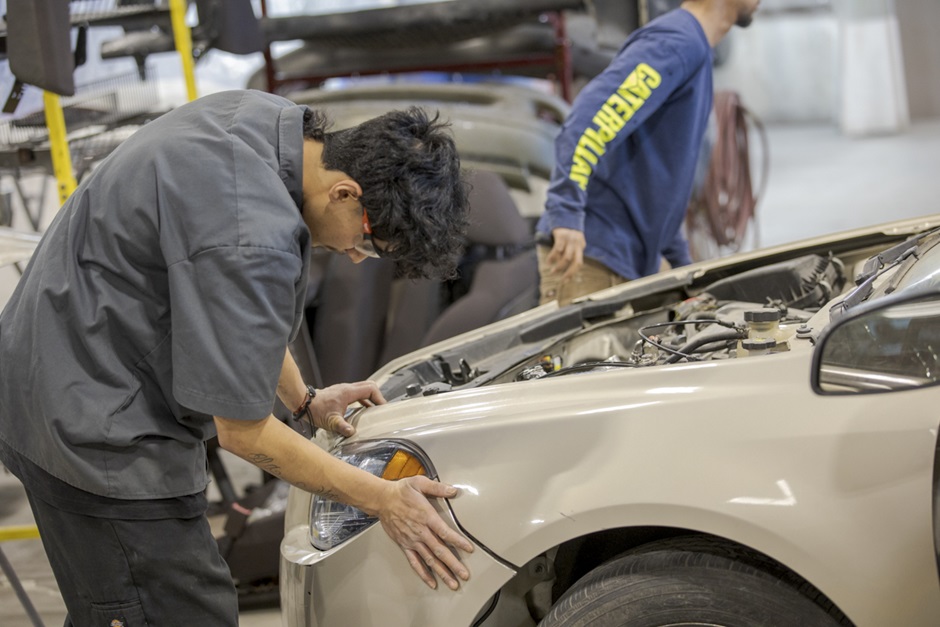
Auto collision repair centers play a crucial role in restoring vehicles to their pre-accident condition, ensuring both safety and aesthetic appeal. This article explores the key aspects of choosing an auto collision repair center and delves into the specific process of car collision repair.
Understanding the Role of Auto Collision Repair Centers
Auto collision repair centers are specialized facilities dedicated to repairing vehicles that have been damaged in accidents. These centers are equipped with advanced technology and staffed by skilled technicians who address various types of damage, from minor dents and scratches to major structural repairs.
The primary goal of an auto collision repair center is to return the vehicle to its original factory specifications, ensuring it is safe to drive and visually appealing. This involves a range of services, including bodywork, painting, and mechanical repairs, each of which requires a high level of expertise.
Choosing the Right Auto Collision Repair Center
Selecting the appropriate auto collision repair center is essential for ensuring that your vehicle receives high-quality repairs. Consider the following factors when making your decision:
1. Certification and Credentials
A reputable auto collision repair center should have proper certifications from industry-recognized organizations, such as the National Institute for Automotive Service Excellence (ASE) or the Inter-Industry Conference on Auto Collision Repair (I-CAR). These certifications indicate that the center adheres to industry standards and employs trained professionals.
2. Experience and Expertise
Experience plays a significant role in the quality of repairs. Look for a repair center with a proven track record in handling a variety of collision damage. Technicians should be skilled in both the latest repair techniques and the use of advanced equipment.
3. Customer Reviews and Recommendations
Customer feedback can provide valuable insights into the quality of service at a repair center. Online reviews and recommendations from friends or family can help you gauge the center’s reputation and customer satisfaction levels.
4. Insurance Partnerships
Many auto collision repair centers have partnerships with insurance companies. This can streamline the repair process, as the center will be familiar with insurance procedures and can assist in handling claims and paperwork.
Car Collision Repair: The Process Explained
The car collision repair involves several steps, each designed to address specific types of damage and ensure that the vehicle is restored to its optimal condition.
1. Initial Assessment and Estimation
The repair process begins with an initial assessment of the damage. Technicians examine the vehicle to determine the extent of the repairs needed. This assessment is followed by a detailed estimate, which outlines the cost of parts and labor required for the repairs.
2. Disassembly and Inspection
Once the estimate is approved, the vehicle is disassembled to reveal the full extent of the damage. This step allows technicians to inspect hidden areas that may have been affected by the collision. Any additional damage discovered during this phase is documented and added to the repair plan.
3. Structural Repairs
If the collision has caused structural damage, it must be addressed to ensure the vehicle’s safety and performance. Structural repairs involve realigning or replacing damaged components such as the frame or chassis. This process requires precision and specialized equipment to restore the vehicle to its original specifications.
4. Bodywork and Painting
After structural repairs are completed, the focus shifts to bodywork and painting. This includes repairing dents, scratches, and any other cosmetic damage. The vehicle is then painted to match its original color, using high-quality materials to ensure a seamless finish.
5. Reassembly and Final Inspection
Once the bodywork and painting are finished, the vehicle is reassembled. This step involves reinstalling any parts that were removed during disassembly. After reassembly, the vehicle undergoes a final inspection to ensure that all repairs meet quality standards and that the vehicle is ready for safe operation.
6. Quality Assurance and Customer Review
The final phase of the repair process involves a quality assurance check to ensure that all aspects of the repair are up to standard. The vehicle is also reviewed with the customer to confirm that the repairs meet their expectations and that any concerns are addressed.
Conclusion
Auto collision repair centers are essential for restoring vehicles to their pre-accident condition, ensuring both safety and visual appeal. By understanding the key factors in selecting a repair center and the detailed process of car collision repair, vehicle owners can make informed decisions and ensure that their vehicles are repaired to the highest standards. Whether dealing with minor cosmetic damage or major structural repairs, a reputable auto collision repair center provides the expertise and resources needed to restore a vehicle effectively.

